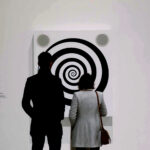
Too Many Ideas Syndrome” (TMIS) is supposedly a real phenomenon and the subject of many discussions online. (Credit: Pixabay)
When I was 13, my mum bought me an amazing thesaurus that made me very excited about playing with words. I had attempted creative writing (very tiny tales about animals) at the ages of 7 and 10 but this time it was different. I knew that whatever was happening to me was going to last. I found myself racing to pen poems. I wrote a few—with multiple paragraphs and narratives—that I felt proud of.
But with the new obsession came a new problem. Following my completed poems, I dreamt up the titles of several more—over 50. Around age 15 and 16, I began thinking up concepts for novels. I tried writing stories that could go on to become longer projects but it was not easy for me to concentrate on any one particular outline. The restlessness continued in my 20s. I would also quickly “out-mature” the stories—that is, at 25, I would find something I’d written at 21 quite embarrassing, and dream up additional concepts in alignment with my life experience and mindset at that time. Business courses along the years made my mind even more enthusiastic, and had me thinking of initiatives in hospitality, fashion, then something known as an “edutainment forum”.
We all know that anybody who wants to try anything creative goes through “blocks” during which there seems to be no stimulation. The opposite is also true—informally called “Too Many Ideas Syndrome” (TMIS). How do you know and decide which idea is worth pursuing and focussing on?
 Too many ideas can lead to too many options and “Choice Overload Bias”, a cognitive situation that can have negative outcomes such as decision fatigue and low level of satisfaction with one’s pick. (Credit: Pixabay)
Too many ideas can lead to too many options and “Choice Overload Bias”, a cognitive situation that can have negative outcomes such as decision fatigue and low level of satisfaction with one’s pick. (Credit: Pixabay)
I think of two useful ways in which one can confront an excess of inspiration.
1). Allow some ideas to self-destruct
In a preface to an omnibus—which, unfortunately, I am unable to locate online—Stephen King points out that what’s unimportant simply self-destructs. I cannot recall the exact words but he meant to say that he doesn’t get too worked up and feel a frantic urge to record every idea because only the ones that are meaningful and precious remain in his mind. This course of action—or rather a very mindful type of inaction—to patiently allow oneself to let ideas flow through one may not be practical for every creative individual at all times. Some of us do make our ideas stronger by writing them down. But I feel that taking a careful step back is worth consideration if one is struggling with mental fatigue. When, for an artist, a particular vision or theme (from among many others that they might have imagined at various moments) emerges again and again—when they are not sketching or making notes, chances are it is coming from a deep place and deserves exploration.
2). Integrate some ideas into a multi-dimensional brand
“Find a hyper-targeted niche”—in the professional world this is a common piece of advice, whatever one’s industry. Offering only one thing repeatedly to the same type of consumer—this logic makes sense in most cases, in the arts as well. With particularity, focus, clear definition one is more likely to gain a loyal audience. However, for a lot of people arriving at that hyper-targeted niche is not easy, no matter how talented they might be.
The reality of this is addressed by American entrepreneur Marie Forleo (who runs a successful online business school, a YouTube channel and has also authored a book). Having coined the word “multipassionate”, she frequently talks about how challenging it was for her to narrow down in her career, as she always had many interests (including dancing, directing commercials) and felt the pull to try out everything. She has taken quite a few of her areas of interest and built an enterprise that is fascinatingly multi-dimensional. It has the capacity to go in different directions but the elements within it remain integrated and easily comprehensible.

Painting of Virgil Abloh by Otis Kwame Kye Quaicoe for Teen Vogue (December 2021)
In the creative sector, a figure that comes to mind is Virgil Abloh (1980-2021). Born in Illinois to Ghanaian parents, Abloh studied civil engineering in college, went on to start his own luxury fashion label Off-White and later, ended up as Artistic Director of menswear at Louis Vuitton. Technically a fashion designer, Abloh worked on several projects in the arts in various capacities—both visual arts and music. He collaborated with Takashi Murakami, performed as a DJ, designed album covers for the likes of Kanye and ASAP Rocky. The Institute of Contemporary Art in Boston organised an exhibition titled “Figures of Speech”devoted to his work, just before Abloh, unfortunately, passed away of cancer at the young age of 41. He is described on the museum website as a “genre-bending artist and designer” who pioneered a practice cutting across media and connecting visual artists, musicians, graphic designers, fashion designers and architects.
Abloh seamlessly blended his many talents into a powerful personal brand (@virgilabloh) and demonstrated that it is possible to not scatter all over the place in the process. The key here, it could be noted, is being confident with your individuality and letting it be an overarching constant through all the forms that your creativity might take.
Written by Tulika Bahadur

